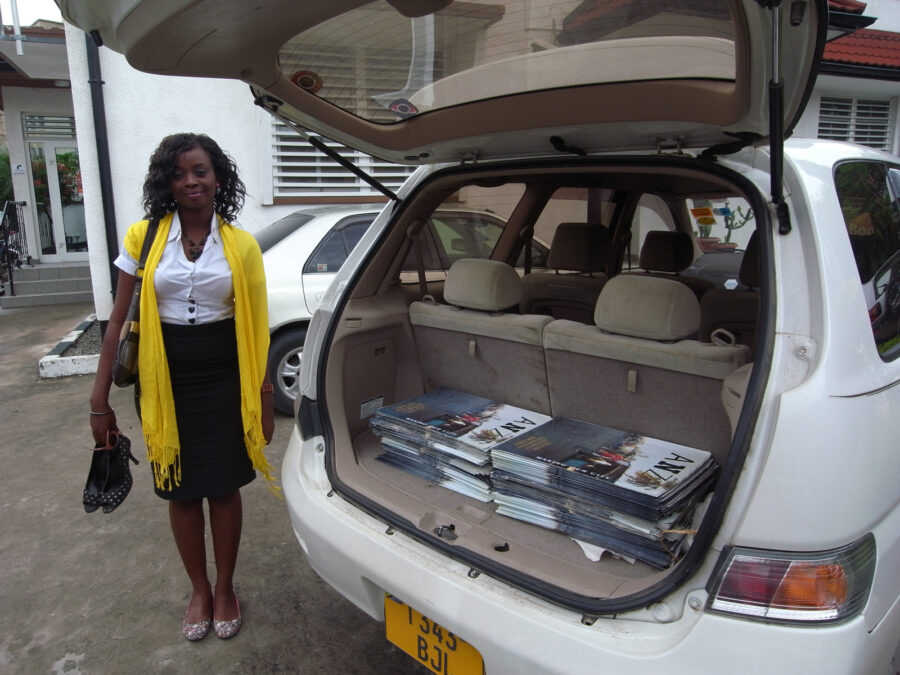Due to the major growth of its cities, East Africa is facing serious urban and architectural challenges. Congestion, illegal construction, and informal settlements place huge strain on systems unable to cope – power supply, sewage and water networks. Until now there has been an absence of a locally produced publication that could act as a platform for critical reflection on the built environment. Critical reflection is a necessity, as the situation in East Africa grows more precarious with each day. A huge part of this problem is a lack of local awareness, especially regarding sustainability.
Camenzind saw the need for a project addressing this issue and conducted a four-week workshop on all aspects relating to magazine-production. The participants were comprised of students and recent graduates in architecture and related fields. They were all based locally in Dar es Salaam, Tanzania. During the course of the workshop, ANZA #1 was written, designed and produced from start to finish. A team of experts comprising of journalists, photographers, architects, graphic designers and artists, as well as the editors of Camenzind provided guidance. A magazine library was established for reference and a series of computers for the team to work on were donated. Seminars were offered on interview technique, photography, editing, layout, publicity, websites and distribution. Crucially, a long-term strategy for ANZA was set up.
ANZA (Swahili for ‘start’) is an educational platform, a source of information for decision-makers, a forum for the exchange of opinions and ideas, and a place where innovative solutions to recurring problems are proffered and discussed. The first issue includes a history of the local architecture, a discussion of the city’s current position, poised between competing pressure from industry and tourism. An interview with a local cab driver is juxtaposed with papers by international academics that offer parallels with other African cities.
ANZA was printed in an initial run of 5000 copies and distributed throughout East Africa and Europe. The editorial team that was established there is now publishing further issues.











